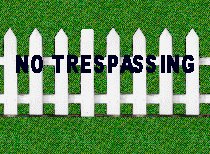
RECENTLY THE MOST HIT PAGE ON GOLFMAK.COM: I wrote this article about fifteen years ago. I updated it slightly in 2012 3,000 GOLF COURSES!
Oh Boy! Covid has changed everything - for the better for golf!
It's 2022, my friends who own golf courses are enjoing the best business they've seen in many years - thanks to the pandemic. It's easy to see why.
Golf is outdoors, natural social distancing, excercise, social, and a mental break from the day.
If you like (or dislike) this article, please write me with your comments: mike@golfmak.com If I suggested there was room for a thousand more golf courses in the USA you'd think I was nuts - given the economic state of the industry in 2013. It's because I believe this business has gone so highbrow it has forgotten an entire segment of society. It's a group of Americans aged twenty-five to seventy-five who have not yet played golf. Most will never take up the game because there is really no place for them to start. I believe golf needs hundreds more low cost, player friendly courses if the industry wants a healthy economic future. This is where municipally owned golf facilities can make a contribution to their citizens and the game.
If I suggested there was room for a thousand more golf courses in the USA you'd think I was nuts - given the economic state of the industry in 2013. It's because I believe this business has gone so highbrow it has forgotten an entire segment of society. It's a group of Americans aged twenty-five to seventy-five who have not yet played golf. Most will never take up the game because there is really no place for them to start. I believe golf needs hundreds more low cost, player friendly courses if the industry wants a healthy economic future. This is where municipally owned golf facilities can make a contribution to their citizens and the game.
We do need 1,000 more golf courses in the USA to save many of the other 17,000 courses from going broke. We need 'threshold' recreation courses people can learn to play and enjoy. The kinds of courses we need are the ones that caused the boom in golf participation in the fifties, sixties, and seventies. We're talking golf courses people can afford to play. Golf courses they can walk. We need push-up greens, push-up tee boxes, and centerline irrigation systems. None need to be longer than 6,300 yards. We need greens with speeds at eight feet, fairways that roll, shallow sand traps (some can putt from). We need golf courses where people who can't and never will break ninety can play and enjoy - why can't a round of golf just be plain fun? These golf courses will feed and rescue the industry. Here's why.
I believe there are millions of Americans who don't play, and never have played golf, but would try the game if it was easier to get involved. There are millions of families that could afford to take an interest in golf but have no way to get started. I don't believe golf associations like National Golf Foundation, USGA, PGA, or local association pay the sufficient attention to the millions of Americans in the twenty-five to seventy-five year age bracket who have yet to even try the game of golf. However, these potential golf participants need a starter golf course - much like the old starter set of golf clubs.
I started in golf when a walking round of golf was about $1.25 (in the 1950's). A membership to the course was about $65.00 a year. Our course was a dusty, 5,400 yard, par-70 that was packed every day. Our tee sheet was set at only five minutes. We had over 100 sets of rentals clubs that often went out twice a day. On a given day about one bag in ten was playing their first game of golf. I was the starter in the morning. I cleaned the 100 sets every evening. That era is long gone, and we need it back!
 I mean, if you're thirty-eight years old, make $75 thousand a year, and never played golf you won't consider giving it a try. You won't because nobody really wants you. At age thirty-five the game is like a closed society. Nobody wants to play golf with someone who's going to shoot 135 or more? Most professionals really don't want to teach beginners (because they hate teaching beginners). Every golf school ad says, "Improve your game." I don't see many that say, "Come and Learn to play golf!" What's this got to do with adding another 1,000 golf courses to the USA? It's where a properly planned and implemented municipal recreational golf course program can serve both the community and the golf course industry.
I mean, if you're thirty-eight years old, make $75 thousand a year, and never played golf you won't consider giving it a try. You won't because nobody really wants you. At age thirty-five the game is like a closed society. Nobody wants to play golf with someone who's going to shoot 135 or more? Most professionals really don't want to teach beginners (because they hate teaching beginners). Every golf school ad says, "Improve your game." I don't see many that say, "Come and Learn to play golf!" What's this got to do with adding another 1,000 golf courses to the USA? It's where a properly planned and implemented municipal recreational golf course program can serve both the community and the golf course industry.
I believe municipalities can plan, build, and operate their own 'recreational' golf courses in a manner that will compliment the community and the golf industry economy. I mean golf courses created on redundant land, designed to walk or ride, with a construction budget that computes to low green fees and membership fees. The facility needs a decent learning center (practice range), plus a continual and ongoing program to teach and encourage people to enjoy playing golf. It must be a walking golf course, with rental sets, rental pull carts, and forward tees for women and junior golfers. If space allows, a nine-hole par-3 golf course opens the door for older men and women, and even handicapped persons to enjoy golf - on and on in to their nineties.
The recreational golf course I recommend only needs a small clubhouse with a pro shop and a simple grillroom (not more than 4,000 square feet in size). It is important to plan the clubhouse to be functional, easy to operate, and easy to manage. The entire project shouldn't cost the community a dime, as it can be financed by bonding issues, and leased back to a golf course operator for more than debt coverage. To protect the community's interests, the course would need to be operated in an 'acceptable' manner.
financed by bonding issues, and leased back to a golf course operator for more than debt coverage. To protect the community's interests, the course would need to be operated in an 'acceptable' manner.
I have discussed this type of municipal golf course plan to several architects, golf construction companies, and financial sources. There are thousands of acres available for this kind of project. If well thought and planned, recreational golf courses might be created -up and running - for less than $3 million. The finished product would include infrastructures, clubhouse, and be fully equipped to operate.
The current high priced set of golf courses won't bring in enough new golf players to replace natural attrition (evidenced by National Golf Foundation Studies). We need new adult golf players. In my experience, every new golfer in the middle age bracket will cause other non-golfers to take up the game. They'll encourage family members, workplace associates, and friends to take up golf. I know!
I brought thousands of new golfers into golf over twenty-five years (1963 - 1988) while operating an annual learn-to-play-golf program. The single qualifier to be eligible to join our golf school: STUDENTS MUST NEVER HAVE PLAYED GOLF! We supplied all the clubs, balls, tees, teaching, etc. and later saw that they continued by playing the course. In many occasions I watched mom, dad, or an employee from a local business take up golf in our classes. Next thing you know, they're bringing out more people to learn. Many of those new golfers were capable of 'graduating' to the higher priced country clubs, or play the higher priced public golf courses - which they did!
All that happened regularly back in the fifties through the eighties. It's not happening now. It's not going to happen as long as they keep building courses that are out of reach.
In my opinion, golf will get back to positive economic health in one of two ways:
- Abandon 3,000 current golf courses, or
- Build the game the way they did in the fifties and sixties with affordable, player friendly golf courses.
That's where I see how municipally owned golf courses can serve the community and the golf industry.
Repeat: If you like (or dislike) this article, please write me with your comments: mike@golfmak.com
Mike Kahn